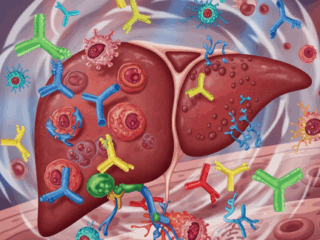
Getting your cholesterol results can feel like staring at a puzzle you’re supposed to solve. LDL, HDL, triglycerides, totals, and then a verdict that seems to hover between “fine” and “do something soon.” The aim of this guide is to turn that confusion into useful next steps so you can speak with your doctor confidently and make choices that protect your heart.
What Cholesterol Actually Is
Cholesterol is essential for your body as it is a waxy substance that is key to cell building, hormone production, and digestion. Your liver makes it, and some foods contain it too. Trouble starts when there’s too much of the less helpful type moving around in your blood. That excess can settle in artery walls, narrowing the space for blood to pass and raising the risk of heart disease or stroke.
If you’re considering a fuller check, services like health assessments from Vista Health include assessments that measure cholesterol along with other indicators of heart health.
Types of Cholesterol in Plain English
Your report usually shows four figures. LDL means low-density lipoprotein, though it is often simply referred to as “bad cholesterol.” It delivers cholesterol to cells, and when levels are high, it can stick to artery walls. HDL is high-density lipoprotein, often called “good cholesterol,” because it helps carry excess cholesterol back to the liver to be cleared. Triglycerides are fats made from unused calories; high values are linked with refined carbohydrates, too much alcohol, and too little movement. Total cholesterol is a combined figure, but doctors tend to look at the balance between LDL and HDL rather than the total alone.
How to Read Your Report

In the UK, labs usually report cholesterol in mmol/L. As a broad guide, total cholesterol at 5 mmol/L or less is generally considered desirable, LDL at 3 mmol/L or less is usually healthy, HDL at 1 mmol/L or higher is a good sign, and triglycerides at 1.7 mmol/L or less are commonly viewed as ideal. These are reference points, not judgments. A clinician will place them in context with your age, blood pressure, family history, smoking status, and other factors. If you want a simple, trustworthy explainer, the NHS cholesterol test guidance is a solid place to start.
What High or Low Levels Could Mean
High LDL or triglycerides can reflect a pattern of eating high in saturated or trans fats, limited physical activity, excess weight, or smoking. Sometimes the cause is genetic, which is why a healthy lifestyle does not always produce perfect numbers. Low HDL reduces your system’s ability to clear LDL and can raise risk even if the total doesn’t look alarming. Other conditions can skew results too, including thyroid problems, diabetes, kidney disease, and certain medicines. That’s why a single number never tells the whole story.
What To Do After Receiving Your Results
A good next move is to talk through your report with your GP. If your numbers are borderline, they may suggest repeating the test after a period of lifestyle changes to see how your body responds. If your results clearly point to a higher risk, you might discuss statins or other treatments alongside diet and activity changes.
Medication can be helpful, but habits carry most of the long-term effects. If your levels are already in a healthy range, keep doing what works and plan follow-up tests at sensible intervals so you can spot any drift as you get older.
Everyday Changes That Help
Food: focus on fibre from oats, whole grains, beans, lentils, fruit, and vegetables. Fibre helps bind cholesterol in the gut, so more of it leaves the body. Replace saturated fats from fatty cuts of meat, butter, and full-fat cheese with unsaturated fats like nuts, olive oil, oily fish, and seeds. Choose lean proteins and keep an eye on portion sizes of refined carbohydrates and sweets, which can push triglycerides up.
Activity: aim for regular movement most days. Brisk walking, cycling, swimming, and strength work with body weight or light weights. All count. The exact routine matters less than finding something you’ll actually keep doing.
Smoking and alcohol: quitting smoking helps HDL rise and protects your blood vessels. If you drink, keep it moderate. Alcohol can push triglycerides higher and add empty calories that are stored as fat.
Stress and sleep: stress can pull you toward quick comfort foods, extra drinks, and skipped workouts. Short daily stress breaks and a steady sleep schedule make it easier to keep helpful routines in place.
For broader guidance that ties these changes to heart protection, read the Heart health advice from the NHS.
When To Retest and How To Track Progress
Cholesterol changes slowly, so you need time to see the effect of new habits. If your results were borderline or high, many doctors suggest testing again in six to twelve months. If you started medication, the first few checks may be closer together.
People with healthy readings can often retest every two to three years, though a strong family history or new risk factors may justify earlier checks. Keep a simple log of your results, your average weekly activity, and any changes you made. It feels much better to be consistent when your habits and the numbers are moving in the same direction.

A Quick Sense Check: When To Seek Help Sooner
Book in promptly if you have chest pain, sudden shortness of breath, or any new symptoms that worry you. Cholesterol is one part of the situation, and symptoms should always be taken seriously, even if last year’s numbers looked fine. If your family has a history of early heart disease, ask your GP whether you need a more detailed assessment or earlier treatment.
The Takeaway
A cholesterol report is a tool, not a verdict. It shows where you stand today and points toward small actions that pay off over time. With a clear view of LDL, HDL, triglycerides, and totals, plus steady changes to food, activity, sleep, and smoking or alcohol habits, most people can tilt the odds in their favour.
Use your next appointment to make a simple plan you can keep, then check back to see the results of your effort. If you want extra clarity along the way, the NHS resources above are dependable and easy to follow.












